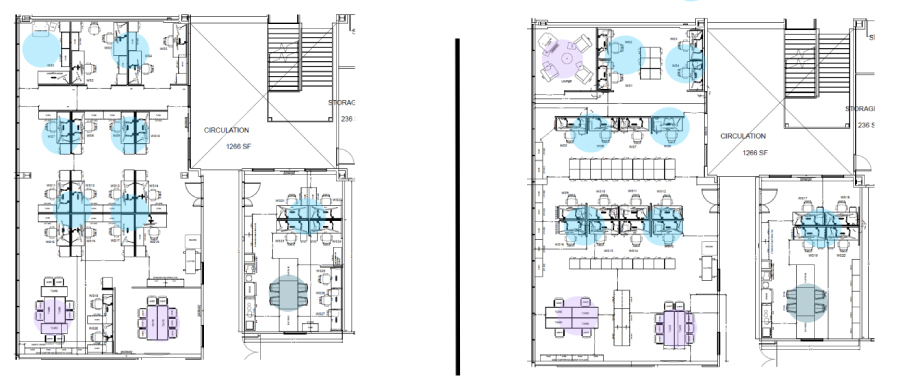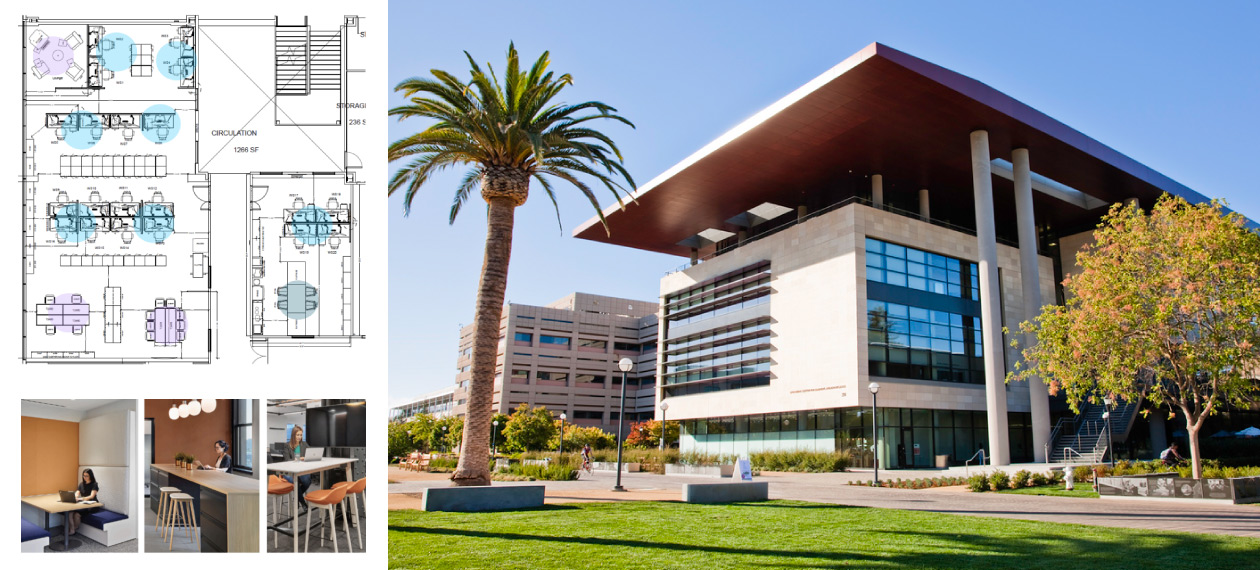In a recent talk at the Higher Ed Facilities Forum, Niraj Dangoria offered a provocative suggestion. “There are many architects in this room,” said the Associate Dean for Facilities and Planning at Stanford Medicine, “and I will submit to you that I think the way we are programming spaces is wrong.”
It was hardly an untested hypothesis. After the pandemic shut down Stanford’s campus operations, Dangoria hired a consultancy to survey the school’s employees, who were largely working from home. Over a series of surveys in the summer and fall of 2020, a high percentage of respondents – 79 percent in June, 80 percent in September – said they were very happy working from home.
This figure was especially notable given the surveys’ consistently high response rates: 78 percent in June, 86 percent in September. “When results are consistent with such a large population, you have to pay attention,” he said.
Four Buckets to Rule Them All
The data led Dangoria to an eye-opening conclusion. "By and large, the issue of flexible work is not about space and facilities," he said. "It's really about HR. It's really about the people.” Flexible work allows companies – especially those that can’t offer compensation packages to compete with the local tech giants – to meet the evolving needs of an evolving workforce. With an effective remote strategy, you can increase access to talent, eliminate burdensome commutes and space constraints, enhance diversity and inclusivity, and foster your employees’ overall well-being.
To craft that strategy, you need only look closely at each job’s buckets: Dangoria’s term for the four modes of work every role involves. There’s Focus, or heads-down, task-focused work; Engagement, or meetings and other forms of collaboration with coworkers; Community, or social interaction with coworkers and peers; and Service, external client-serving work.
The buckets themselves present varying space needs – Engagement, Focus, and Service can all be filled remotely or onsite, while Community can only be filled in the office – and every role fills each bucket differently. As a hypothetical, Dangoria described a data manager who spends most of their time in the Focus bucket and a volleyball coach who spends most of theirs in Engagement and Community.
“Why is it that we create the same kind of space for both of these people?” he asked. “When we know that every job fills these buckets differently, shouldn't we be thinking more creatively about how to program spaces?”
From Ownership to Membership
Going forward, Dangoria plans to develop a formulaic approach to space programming that incorporates the four buckets. He won’t be able to report back on that strategy for another year or so, but in the short term he’s running a pilot in his office at Stanford.

Stanford Medicine - Before and After Offices Layout
The old arrangement was an “assigned space model” in which everyone had their own cubicle. In the new “free address model,” workers still get their own storage unit, but the office is divided into hot desks, with a few spaces for meetings and collaborative work and a community gathering area in the kitchen.
The new design, which has been operational since August, accommodates around 32 people as opposed to the old design’s 22. (There are usually fewer than ten people in the office on a given day, he said). On a philosophical level, Dangoria’s hope is that the approach will foster a movement towards a more community-based, collaborative relationship to the workplace. “We are so focused on what is mine and this is where I live,” he said. “This is deeply ingrained in our heads, right? How do we move from a model of ownership – this is mine – to a model of membership – this is ours?”
Change, of course, comes with its own set of challenges. For Dangoria’s pilot, the biggest one was the price: even without buying a single piece of furniture, reconfiguring the office ran up $70,000 in labor costs. “How many people are going to really be able to afford the kind of change that we are talking about?” he asked. “This is a reality that I haven’t been able to wrap my head around… at what price does change come?”
Into the Unknown
Dangoria wrapped up his talk by posing three questions:
- What is the single biggest change you envision as you chart this path into the unknown?
- What obstacles, if any, will you have to overcome?
- How do we preserve our workplace culture as we navigate these changes?
In closing, he cautioned that institutions should let logic rather than emotions guide their responses to these questions – and that whatever the answers may be, one constant will remain. “Change,” he said, “takes a whole lot of time and money.”

Posted by
Join us at HEFF!
An interactive retreat for facilities leaders at the nation's top colleges and universities.
Nov 8-10, 2026 | San Antonio, TX
Learn More









Comments